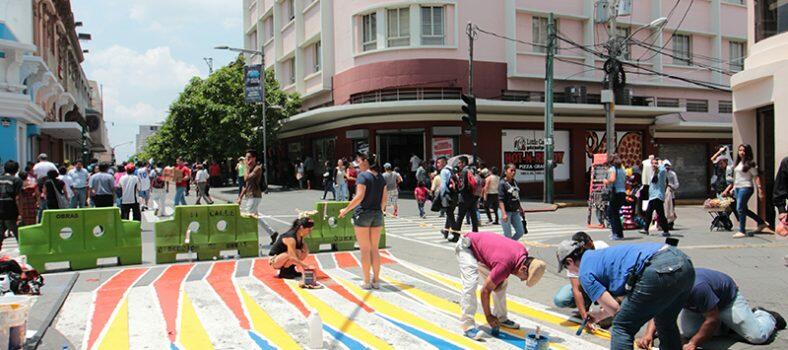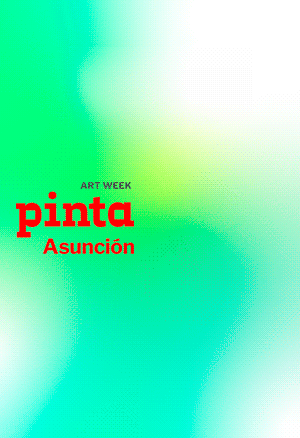MÁS ALLÁ: XXI PAIZ BIENNIAL
Almost one month before the XXI Paiz Biennial that takes place every two years in Guatemala, general curator Gerardo Mosquera explains the concept under which this new edition of the second oldest Latin-American Biennial is developed. Focused on the way of proceeding tover a theme, Más allá (Beyond) leaves aside the classic exhausting dialogues of a particular topic.

Through a press release, Mosquera circulated a text in which he makes a historical view of the Biennial and explains it , himself, the novelties of this new edition:
Introduction
The Paiz Biennale not only has the merit of being - as far as I know - the sixth oldest in the world, after those of Venice (1895), Sao Paulo (1951), Ljubljana (1955), Sydney (1973) and the Whitney Museum (1932/1973), in New York. It is, therefore, the second oldest in Latin America. It also distinguishes it having been able to celebrate without interruption every two years, despite the difficult situations of war and repression that Guatemala has gone through.
It is also remarkable that the Paiz Biennial has been able to renew itself according to the times. The project for the next Biennial seeks to continue that dynamic line in pursuit of new possibilities, perhaps more radical, but which I consider beneficial for the art of Guatemala and the projection of the Biennial itself.
Concept
This edition of the Paiz Biennial will not have a theme. Rather, the subject will be its own methodology. The meaning of the Biennial will not be constructed through a discussion of an issue, but through a model of action. Although the events and thematic exhibitions are adequate and fruitful, the truth is that inflation has taken place which makes proliferate a certain "thematism" that too often remains in mere discursive juggling, with little relation to the content of the shows and programs. This project explores another course as a reaction to this trend, and, at the same time - and more importantly - proposes a biennial model that seems appropriate to the situation in Guatemala and the evolution of the Paiz Biennial as a living event.
The idea is to make a biennial more contextual and inclusive, rhizomatic, decentralized in space and time, and more communicative with the public. The Biennial will consist of a constellation of different activities that will go beyond Guatemala City and will be carried out throughout the country, and even beyond its borders, in collaboration with different spaces of artists, institutions, events and other agents. This will also go beyond the artistic circuits. Precisely, the notion of beyond will be the axis of action of the Biennial.
Beyond Art
The Biennial would maintain its usual exhibition spaces in the center of Guatemala City. In these places will be exhibited works and events that, in one way or another, will go beyond circuits, traditions, poetics and established schemes, or address issues of transgressions, transfers and overflows.
Some examples: the exhibition "Life", by the Spanish war photographer Gervasio Sánchez; the video "18 días", by the Chinese artist Xu Zhen, which shows his ironic action of illegally crossing the Chinese border with teleguided toys; a large installation by Salvadoran Simón Vega with his "Third World Spaceships", where space technology is represented with its own bricolage of favelas; and the monumental intervention with drawings on the walls and interactive light fixtures of the Uruguayan Ricardo Lanzarini. Along with this centripetal art pieces and documentation resulting from the urban and community projects that are listed below will be presented.
The Cultural Center of Spain will also offer a "personal show" by the filmmaker Julio Hernández Cordón, that is, a program where his film production will be screened and discussed.
Beyond the whithe cube
Guatemala has an extraordinary tradition of art outside doors, in the public space, social, in communities, etc., which goes from sculptural reliefs to murals, to performances, to "artivist" actions. In line with this line so relevant in art in the country, the XXI Biennial will be more "street", meaning this presence outside the aura spaces. Among the artists who have been invited to contribute in this direction are Gervasio Sánchez (Spain), Tania Bruguera (Cuba) and Bernabé Arévalo (Guatemala) in Guatemala City, and Humberto Vélez (Panama), who will organize a popular festival in Sumpango, starred by the villagers from Mayan traditions and the impressive local celebration of the day of the dead with giant kites.
As part of these efforts, the Biennial will seek to contribute to the commendable education programs, focused on young people in vulnerable situations, maintained by the Paiz Foundation under the direction of Ana Castillo. In connection with it, the Puerto Rican artist Jesús "Bubu" Negrón will work with the youth of the Manuel Colom Argueta settlement, where the community lives to recycle material taken from the adjacent rubbish dump. Continuing with these "crossed" connections, beyond the strict curatorial sector of the Biennial, the Cuban artist and pedagogue René Francisco Rodríguez will develop, within the educational sector of the Biennial curated by Esperanza de León, a project in a hospital with terminally ill patients and young art students.
Along with works that will act outside the white cube, there will be others that will invade from the street. The Biennial will present in the space of Casa Celeste, entering from the facade, the posters of the movement H.I.J.O.S. that papered the walls of the center of Guatemala for their denunciations about the disappeared in the armed conflict.
Beyond Guatemala City
In the recent past, self-managed spaces have flourished in different locations in Guatemala, such as initiatives by artists and other intellectuals linked to communities. At the moment, their programs are in detention or in precarious situations, mainly due to the lack of funding. The Biennial will stimulate these efforts by supporting proposals to benefit the contextual agendas of these projects, which were discussed in dialogue with the curators and approved by them. In this way, it is not a question of extending the Biennial beyond the capital through ideas landed from the center in other locations, but vice versa, in joint ventures organized locally.
To this end, projects will be developed with community organizations in San Juan Comalapa, with Canal Cultural in San Pedro La Laguna, and Salvadoran artist Alexia Miranda will hold an art workshop with children from the Beluba Luba Furendei center in Livingston. A seminar by the Spanish professor, theorist and cultural activist Alberto López Cuenca, and an artistic workshop by Ricardo Lanzarini will also be organized.
Beyond Republic of Guatemala
The Biennial will include samples of Guatemalans in spaces outside the country, in collaboration with them: the University Museum of Contemporary Art (HIJOS) and the Siqueiros Public Art Room (Naufus Ramírez Figueroa), both in Mexico City, and the NG Gallery (Sandra Monterroso) in Panama.
Beyond the analog world
The web site of the Biennial should function as the main means of communication of the event, and as an open and dynamic space for exchange. Further, the work of Bryan Castro (Guatemala) -not without humor- will consist in making a defacement on the site.
Beyon education
Esperanza de León, curator of education, will develop a program with her own agency, which will not be limited to pedagogically communicating the Biennial, but will go further to generate their own activities within the framework of the event. This would be manifested in a mapping of schools and existing pedagogical efforts with which one could work, and in an important program of workshops, talks, meetings and educational activities in general, which will not be considered secondary or derivative, but will have their own weight. All participating foreign artists going to Guatemala will offer public talks about their works, and in some cases workshops, such as Ricardo Lanzarini in Guatemala City and Magdalena Atria (Chile) in Rabinal.
Educational efforts will be sought which, more than explaining the works of art, seek an active reception and dialogue on the part of the public.
Curatorship
Maya Juracán and Laura A. L. Wellen are curators of the Biennial. Although fully international, the event will focus on its closest geographic-cultural environment: Central America and Mexico. A good part of the Guatemalan artists were selected through an open call. In addition to them, national participation will include those -professionals or incidentals- who will take part in community projects.
Catalogue
A catalog of importance will be published, as is customary, that will appear after the official opening of the Biennial, since it will have to document the specific projects that will be carried out. The publication will be presented at a closing ceremony of the Biennial in mid-September.
Gerardo Mosquera
General Curator




